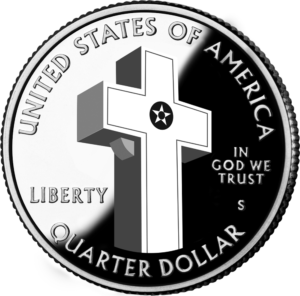“Narrow Rulings” Mean Little to the Christian Right Give them an inch, they’ll take a mile

Scare tactics are an important weapon in the assault on church-state separation. This was on display in the American Humanist Association’s recent Supreme Court argument challenging the so-called Peace Cross, a forty-foot Latin cross towering over a traffic circle in the DC suburb of Bladensburg, Maryland. Defenders of the cross, which was originally dedicated to fallen soldiers of the First World War, repeatedly warned that a victory for the AHA would endanger other crosses all over the country.
The AHA’s briefs in the case exposed these warnings as exaggerated, pointing out that only a few stand-alone cross memorials exist on public property nationwide. Nevertheless, the Supreme Court justices raised the subject at oral argument, indicating concern that widespread cross demolition could occur if the AHA prevails.
This concern is not only unfounded, it’s ironic, because history has repeatedly shown that unintended consequences usually run the other way when courts make church-state rulings. To be sure, the danger in the Bladensburg case is not that crosses will be demolished all over the country if the AHA wins, but that crosses will be going up everywhere if the court rules the other way.
But wait, you might say, even if the Supreme Court allows the Bladensburg cross to stand, isn’t it almost certainly going to do so with what’s known as a “narrow ruling”—perhaps a decision that tolerates the cross, but only because it has sat for almost a century? Several justices during oral argument alluded to the age of the cross being an important factor. At one point, for example, Justice Breyer asked AHA Senior Counsel Monica L. Miller, “What do you think of saying, yes, look at the historical context here? History counts.”
It would be a mistake, however, to assume that such a ruling, allowing the cross to stay but highlighting its age as a key reason, would impede the installation of new crosses. History shows that when courts open the religion door an inch, the Christian right will kick it open as wide as possible at the local level, ignoring the nuances of any judicial ruling and welcoming religion into public life far beyond the limits expressed by the underlying court ruling. If there is any decision upholding the Bladensburg cross, the religious right’s interpretation will inevitably be very simple: If you want to erect a cross on public property, call it a war memorial.
The Christian right’s overbroad interpretation of case law can be seen, for example, in its widespread use of “In God We Trust,” the national motto that has survived Establishment Clause challenges. The first major case challenging “In God We Trust” was decided in 1970 by the Ninth Circuit in Aronow v. United States, in which the plaintiff challenged the statute requiring “In God We Trust” to appear on all currency. The Ninth Circuit dismissed the complaint, ruling that the motto is merely “of patriotic or ceremonial character.” Subsequent challenges in other courts, most recently a 2018 Eighth Circuit case, have proven equally futile.
For many years, currency was the only place “In God We Trust” was consistently seen, but recently the Christian right, relying on Aronow and its successors, has begun to expand the use of the religious language guised as a patriotic motto. We now see widespread promotion of “In God We Trust,” especially in the Bible belt, where it is being placed on police cruisers and other municipal vehicles, and where statutes have been passed requiring that it be posted in all public schools and other government buildings. Mississippi recently emblazoned the motto on its standard license plate, requiring drivers who don’t want to be a moving billboard for God-belief to pay extra for an alternative plate.
Encouraging all of this ubiquitous use of the motto is Project Blitz, a highly organized and well-funded effort by the religious right to inject religion into public life.
The ability of the Christian right to selectively read judicial decisions is stunning. The 2014 Supreme Court decision in Town of Greece v. Galloway, for example, was another “narrow” ruling that allowed sectarian prayer in a legislative context but only under certain circumstances. The Supreme Court was careful to point out that it was upholding sectarian prayer in Greece only because the town’s prayer policy was inclusive, allowing even atheists to participate. The opinion also noted that it should not be construed as tolerating prayer in any school setting, nor should legislators themselves lead the prayers.
But none of these details meant much to the religious right. Despite the clarity of the Supreme Court ruling, many communities around the country simply interpreted the decision as a carte blanche for prayer. Whereas Town of Greece frowned on prayer in any school context, for example, we saw school boards adopt and continue prayer practices. When such a practice was challenged in Texas, a lower court and appeals court both cited Town of Greece to uphold the prayer practice, not strike it down.
Similarly, many communities have hesitated to invite nonbelievers and others to lead prayers, despite the contrary language in Town of Greece, and it is still common to see boards in which legislators themselves lead invocations. Few seem to care about the “narrowness” of the Town of Greece decision.
Thus, there is little reason to expect that even a narrow ruling upholding the Bladensburg cross will be seen by the Christian right as anything other than a green light for publicly subsidizing Christian crosses. All the more reason to hope that the justices see the importance of preserving the wall of separation.
